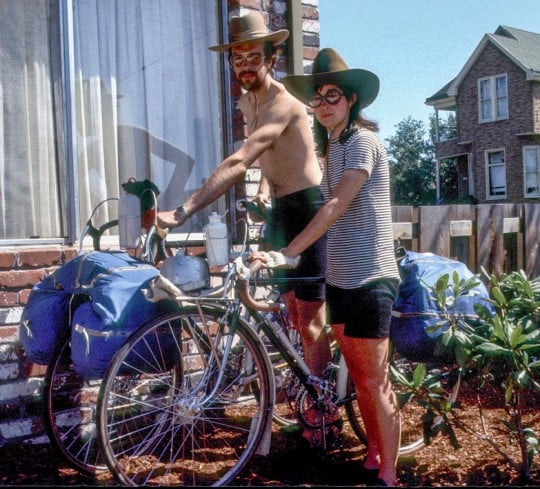
(Photos © Jim Merz)
In 1972 Jim Merz and Virginia Church set off from Portland on an epic bike ride. That alone isn’t groundbreaking or especially newsworthy, but Merz and Church (his wife at the time) aren’t just any bike riders. They both spent their lives in the bicycle industry and their collective work has had a local, national, and global impact.
Beyond that, the main reason I want to share their trip is because of the wonderful photographs Merz captured along the way. But before doing that, a bit of background is in order.
Merz was one of the first custom framebuilders in Portland. After honing his craft here in the early 1970s, he went to work for a guy named Mike Sinyard in 1982. Sinyard had just come out with a bike called the “Stumpjumper” one year earlier. It was the first mass-produced mountain bike and it would change cycling forever. Today Sinyard’s company, Specialized, is one of the most well-known bike brands in the world. Church is also a bike industry veteran, having worked at Cycle Craft bike shop in downtown Portland in the 1970s and then opening The Bicycle Repair Collective with her brother Gary Church. She was co-owner of that shop for 35 years until it closed back in October of 2013.
A few months ago I came across Merz’s great photos of that 1972 bike tour and asked him a few questions about the trip…
BikePortland: How old were you when you left?
Merz: I was 25 and Virginia was like 27.
BP: Why’d you pick Panama?
Merz: Well, the trip was sort of around the world. It was also an experiment in serendipity. We started off heading south, if something changed this path that was OK. I had alway been fascinated with the building of the Panama Canal. Panama is the end of the Panamerican Highway. We tried to go to South America, Columbia would not give us a visa without a return air ticket. That and other things contributed to our decision to go to Portugal instead.
Advertisement
BP: What type of camera/film were you using?
Merz: I used a Topcon Super D. Not as well known as Nikon, but similar. The lenses were 35mm, 58mm and 105mm, all Topcor. Film was Agfachrome. This was a mistake, it faded over time. I should have used Kodachrome.
BP: What can you tell us about your bike?
Merz: At that time, early 1970’s, good bikes were had to get in Portland. I got the top model Raleigh Pro racing bike from Phil’s Bike shop. Not something most people would consider a great touring bike, but it had fender eyes and clearance for fenders. Virginia rode a Raleigh International, a bike with frame design more like a traditional touring bike. Both bikes had tubular tires. I built the racks for both bikes. These racks were very nice, never had one give any trouble. Main bags were made by Gerry. I put mine in the front, the other bike did not have room for this so it went on the rear.
BP: What was your route?
Merz: Started in Portland. Rode through Burns and south east Oregon to Winnemucca. South to Highway 50 east to Utah and Bryce Canyon. South to the north rim of Grand Canyon. Walk across Grand Canyon! South to Tuscon and Nogales. The rest of the way follow the Pan American Highway. In Portugal at Lisbon south to Seville. Gibraltar to Ceuta in Morocco. We tried to spend the winter in a small town called Asila. That’s it for the ride.
BP: How many miles was the route and how long did it take you?
Merz: This was before any cyclo computers, and I did not keep a log, so the total miles is hard to say. But probably around 6,000 to Panama. This leg took about 5 months. One more month riding in Europe and north Africa.
BP: How were you received by people? I imagine there weren’t many bike adventurers back then.
Merz: People in the USA were fine, although we were in the boonies mostly. Mexico was wonderful. Neither one of us know one word of Spanish! Baptism of fire, we learned how to get along. Guatemala was having trouble, it was in State Of Siege. People were fine, but the authorities were pretty bad. This was true of all the countries in Central America. The other thing is every country is different. We did meet other world traveler types along the way. Very few on bikes, but some.
BP: What do you think about the recent surge of interest in “bikepacking” and adventure riding?
Merz: It’s good! My son Jesse is talking of riding to Brazil. I am not thrilled with that!
BP: What are you up to these days?
Merz: I spent my life in the bicycle industry. I built custom frames in Portland, I was the first in fact. in 1982 I went to work for Mike Sinyard. Specialized had just come out with the Stumpjumper bike. I was the main technical guy for about 10 years. The bike touring and frame building I did was very helpful in allowing me to bring high quality bike to many more people. I can say we had a big part in changing the bicycle world.
—
You can view more images and learn more about Jim at his Merz Bicycles page on Facebook.


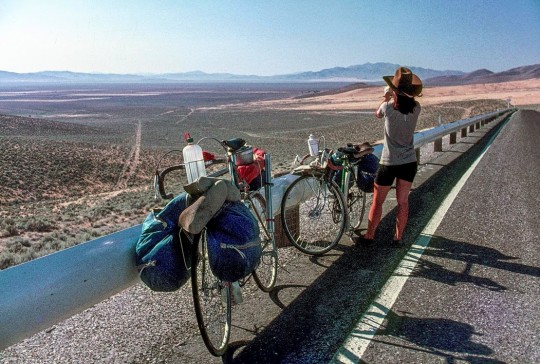
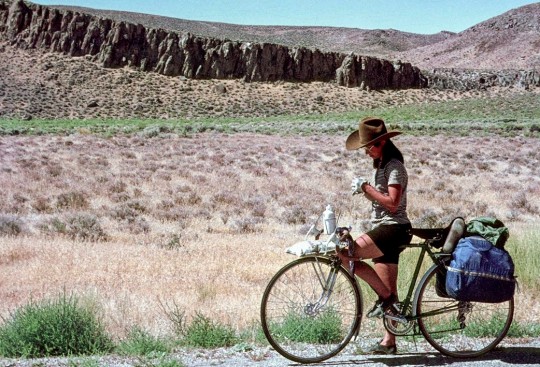
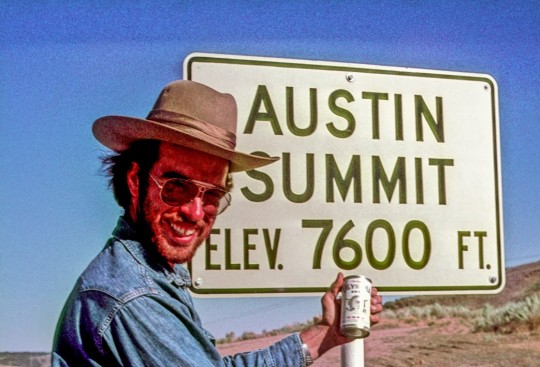
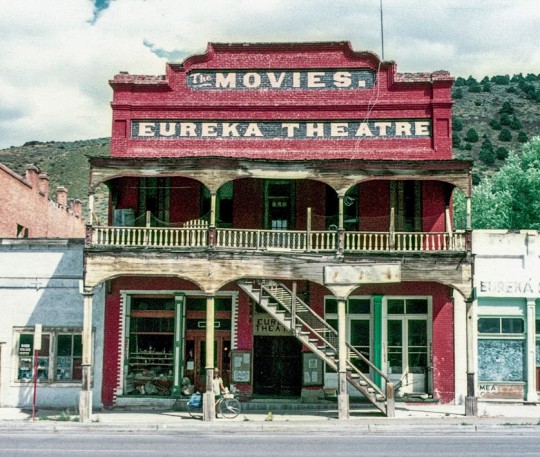
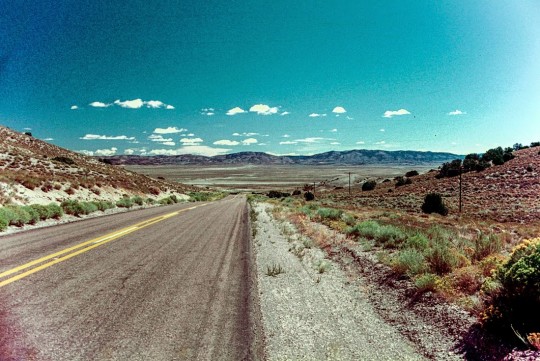
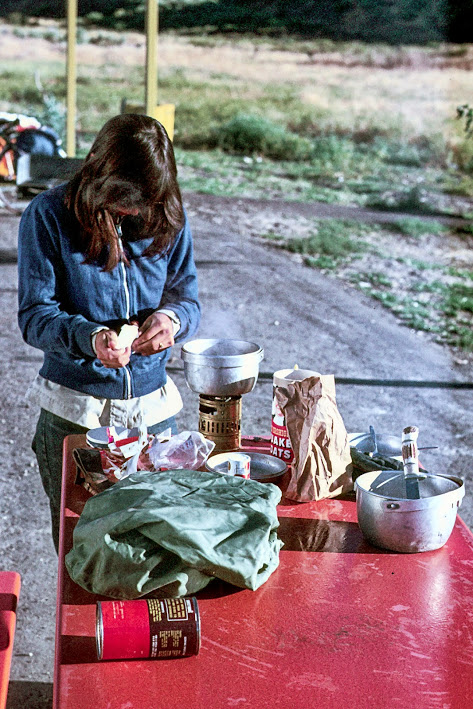
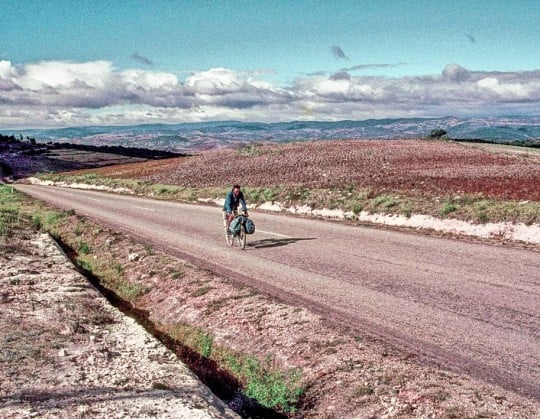

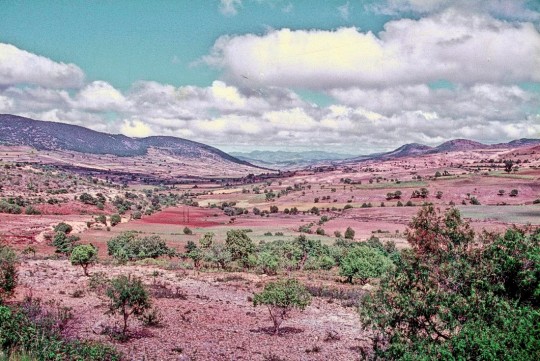
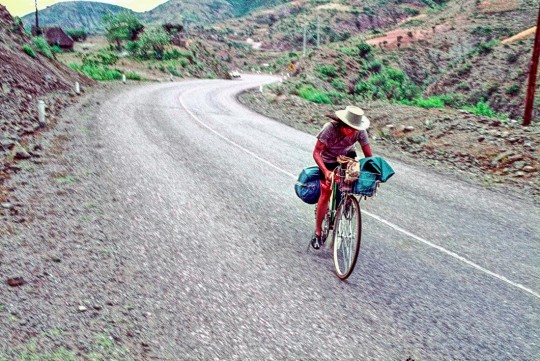
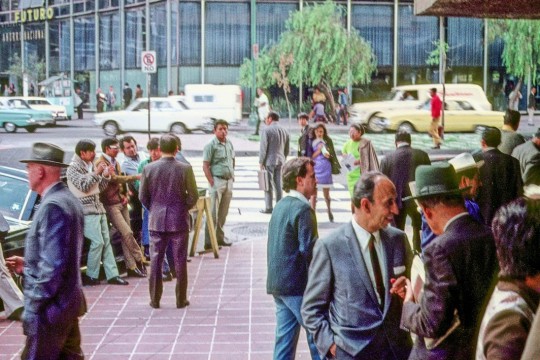
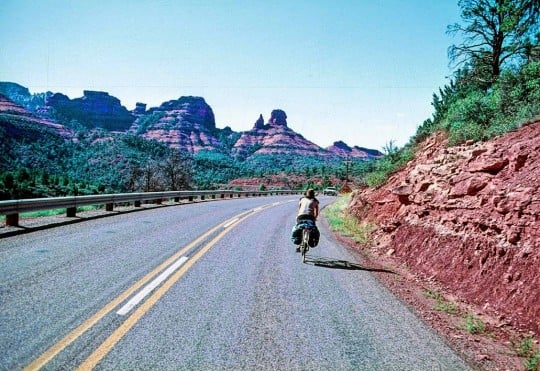
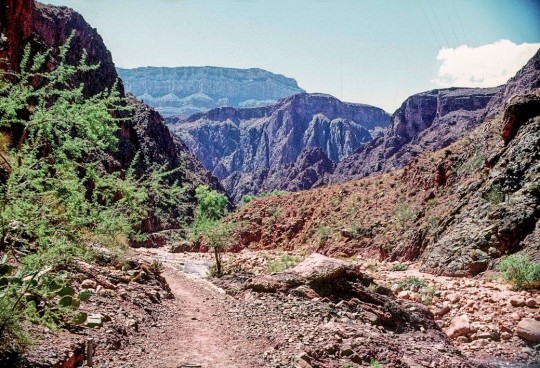
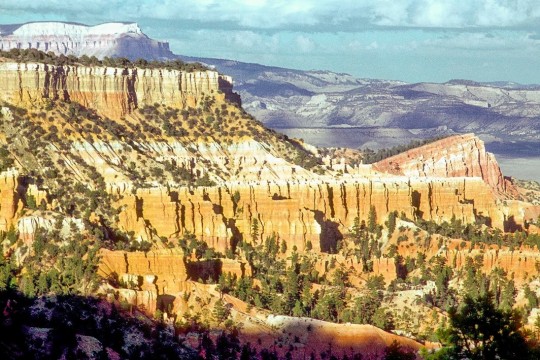
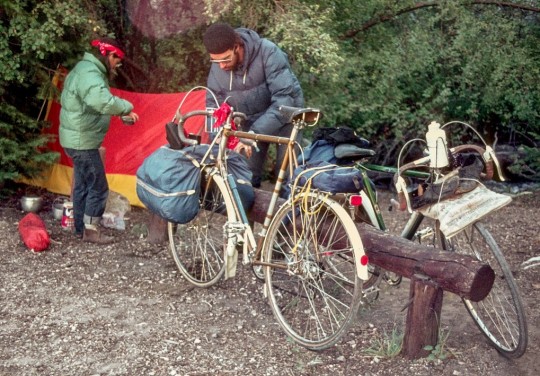
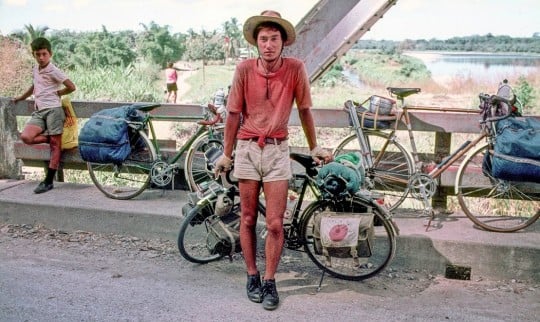

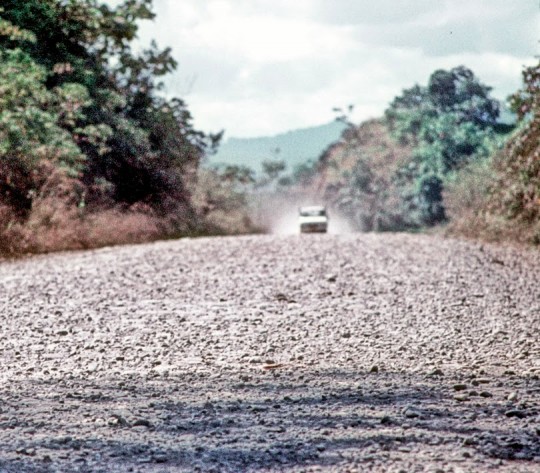

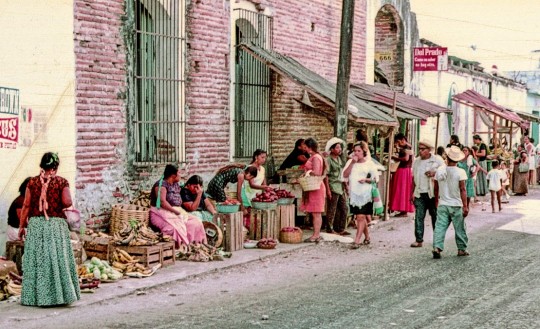
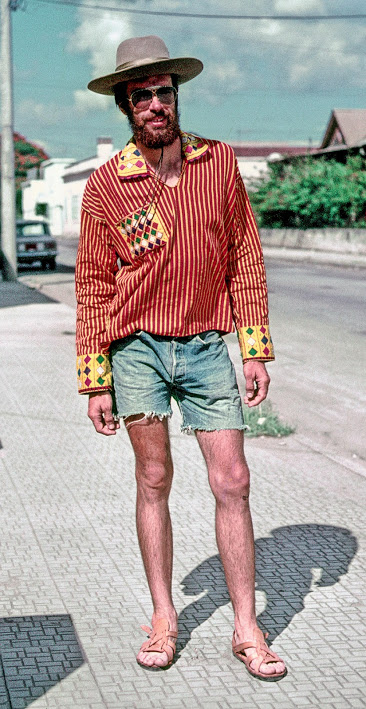




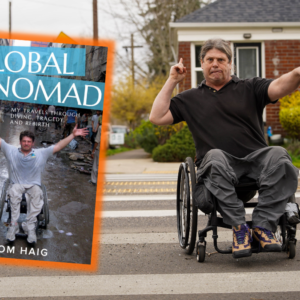
Thanks for reading.
BikePortland has served this community with independent community journalism since 2005. We rely on subscriptions from readers like you to survive. Your financial support is vital in keeping this valuable resource alive and well.
Please subscribe today to strengthen and expand our work.
For once, it is 100% fully appropriate to call a bike tour and accompanying photos as EPIC.
!!!
Amazing. Thanks for sharing these great photos and stories.
Delightful. Amazing. Thanks for publishing these photos and the interview.
Six years ago I chanced upon a bike he made in 1974 in NW Portland, with the most incredible racks front and back. I tried to get in touch with him (through you, Jonathan) back then, but now I can’t remember the details of those racks I was so intrigued by.
Jim,
you don’t by any chance have any photos of the racks (or bikes) you built back then you could share?
Oh, and my parents took that exact photo of the Eureka Theater in I think the same year. But, as car-bound people, they put their car right where one of you appears with your bike.
Ooh. Look what I just found:
http://www.classicrendezvous.com/USA/Merz_main.htm
Very cool! Looks like you used a SVEA 123 camp stove. That thing has been around about 100 years practically unchanged!
Can I get that instagram filter? 😉
Epic adventure from one of Portland’s true bike pioneers. Great stuff
Make that TWO of Portland’s true bike pioneers. Virginia is a truly amazing woman I met through orienteering, of all things. She would be a great person to interview!
That’s a great idea Martha. I’ll get in touch with Virginia.
Yes, thanks for highlighting these pictures and interviewing Jim – this is great!
whoa, great photos! Jim says the Agfachrome film was a mistake, but I love the gently aged look it has. And Virginia, stylistically 30 years ahead of her time!
Wonderful article. I love the vivid pictures and the effect age had on them. The cowboy hat, the poncho, the shirts and cut-off jeans; the details have a lot to say.
In the early 70s, there was little to choose from for the cycle-tourist. Mr Merz made beautiful racks to carry his stuff, but all that was available back then to buy off the shelf was the basic Pletscher rack.
In 1973 I got a Pletscher, attached it to my Mondia road bike, and hung a couple of basic Cannodale panniers on it, and pedaled across the USA and back. At the time, I had read from a youth hostel article that about 100 cyclists per year would pedal across the USA. On my trip I met 3 of them. Much has changed since then…
For people interested, Jim has a Facebook page with all of his building records and a lot of fascinating photos. Virginia is one of the founders of the Bicycle Repair Collective, one of the very best mechanics and mechanic-ing teachers to ever work in Portland.
Thanks for putting the photos and account out for us to enjoy. That was such a bold move to ride out like that… an inspiring trip. I knew Virginia had done some long rides but didn’t realize it was on this scale. The craftsmanship in locating and attaching the packs and the packing technique shown in the photos is excellent. What an adventure. I like the way the photos aged too. I would be interested in reading more historic accounts like this one.
Glad you liked it ray. If you hear of any others let me know.
Loved this story and photos. Very inspiring. Thanks!
Jim built my first custom bike in 1979, and I rode with him around the Portland area. The bike was repainted at least two times; it later served as my rain/winter bike until last year when I sold it for about what I paid Jim in 1979. I went on to purchase and ride bikes from two other NW frame builders, Erickson (2000) and Rodriguez (2013). All my bikes have been red!
All very cool stuff,as it always has been with Merz. I have 2 including JM027 which was his and is the light green one on facebook from the 2100 miles in 21 days mountain passes trip and many others. I met Jim at Cyclecraft in the early days and was hooked ever since, although it took 40 yrs. to get mine. As they say “behind every great man” , Jim was no exception with Virginia as the expert painter, artistic force and undoubtedly wise counsel among all else. This article is very timely as the handmade bicycle show is upon us and I would like to encourage anyone with Merz or any other custom bike to attend with it as I will be doing and I might bring both.
I too would very much look forward to an interview with Virginia.
Jim MERZ built a custom road bike for me in 1976. It was stamped ‘001’, and possibly with my initials preceeding the numbers. The color was Champagne with red tape on the bars, and all “Campy’. I sold it to a well known bike guy in Seattle by the name of Jerry Baker. That bike was wicked fast on the downhill and I may just have some pictures to post up, if I can dig them out of the files. Wish I still had it.
PS;
The P.S. to this story is that when I sold it, the reason was to buy the first Jim MERZ designed Specialized ALLEZ SE (in Red with Yellow bar tape) from the guy I was dealing with. So I went from a MERZ custom from 21st in PDX, to the first MERZ designed production bike. The ALLEZ was a well designed and fast bike and now lives in Milwaukee, WI. One story is that the Metropolitan museum of Art has an original red/yellow ALLEZ SE hanging on display.
Fun Stuff.